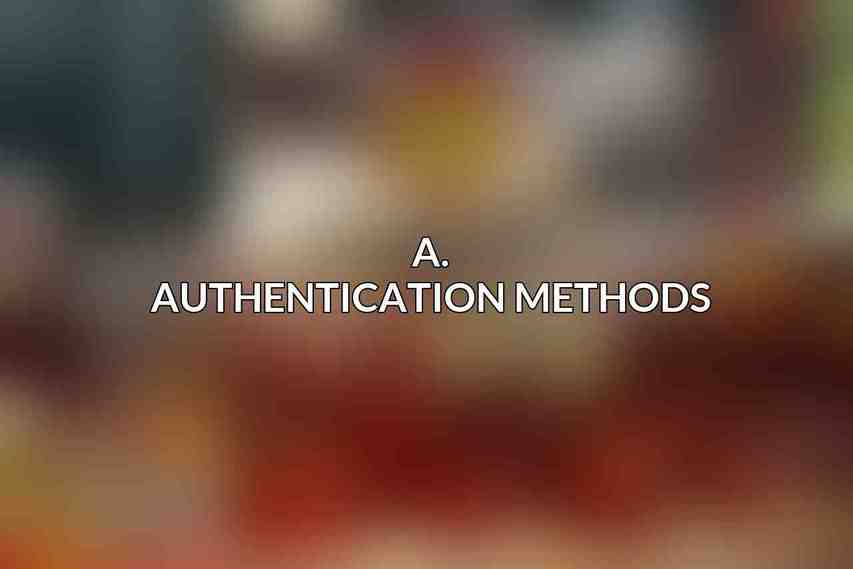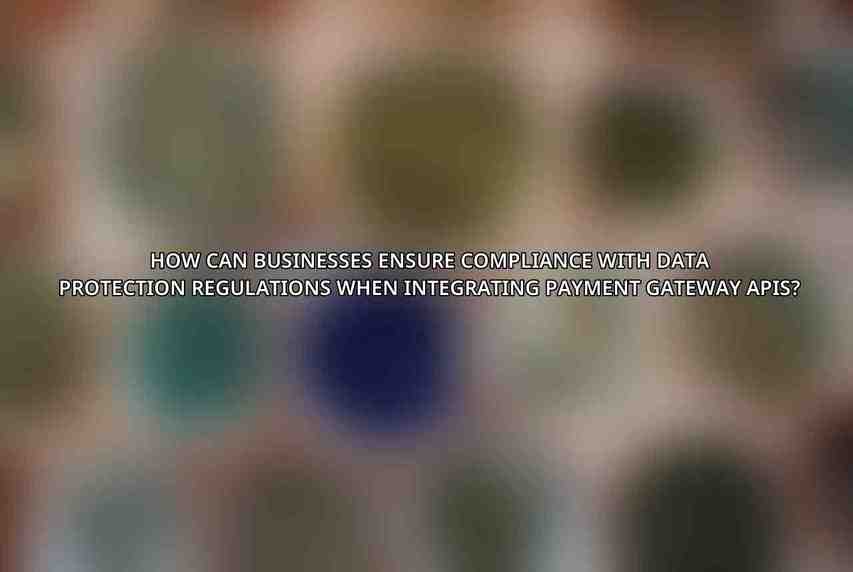secure payment gateway APIs play a crucial role in enabling seamless transactions between businesses and their customers. Secure Payment APIs refer to application programming interfaces that facilitate the secure transmission of payment information between different parties. These APIs are designed to ensure the confidentiality, integrity, and availability of sensitive payment data during electronic transactions.
The importance of secure payment APIs cannot be overstated in this interconnected world where cyber threats loom large. By implementing robust security measures within payment APIs, organizations can safeguard customer data, prevent fraudulent activities, and uphold their reputation. Secure payment APIs not only protect sensitive information but also contribute to building trust and credibility with customers, ultimately leading to enhanced customer loyalty and retention.
However, the stakes are high when it comes to consequences of unsecured payment APIs. An unsecured payment API exposes organizations to various risks, including data breaches, financial losses, regulatory penalties, and reputational damage. The impact of a security incident involving payment APIs can be far-reaching, potentially leading to legal ramifications and loss of customer trust. Therefore, prioritizing the security of payment APIs is essential for any business that processes electronic payments. See our take on Ensuring GDPR Compliance in Payment Gateway Integration
Best Practices for Secure Payment Gateway API Integration
A. Authentication Methods

1. Multi-Factor Authentication (MFA)
Implementing Multi-Factor Authentication (MFA) is a fundamental step in enhancing the security of payment gateway API integration. MFA requires users to provide multiple forms of verification to access sensitive information, adding an extra layer of protection beyond just passwords. Types of MFA include something you know (password), something you have (security token), and something you are (biometrics). While MFA strengthens security, organizations must also consider the user experience and potential challenges in implementing and managing multiple authentication factors effectively.
2. Digital Certificates
Digital certificates serve as cryptographic credentials that validate the identity of entities involved in a transaction. By utilizing digital certificates, organizations can establish secure connections and verify the authenticity of communication channels. Different types of digital certificates, such as SSL/TLS certificates and code signing certificates, offer various levels of security assurance. However, managing and renewing digital certificates can present operational challenges, emphasizing the importance of robust certificate management practices.
3. Tokenization
Tokenization involves replacing sensitive payment data with unique tokens, reducing the risk associated with storing and transmitting actual payment information. By implementing tokenization, organizations can protect sensitive data while maintaining seamless payment transactions. While tokenization enhances security and reduces PCI compliance scope, organizations must ensure proper token management and integration to prevent potential vulnerabilities.
B. Access Controls
1. Role-Based Access Control (RBAC) Learn more about Top Fraud Detection Techniques for Secure Payment Gateway Integration
Role-Based Access Control (RBAC) is a security model that restricts system access based on roles and permissions assigned to individual users. RBAC enhances security by ensuring that users only have access to the resources necessary for their specific roles, reducing the risk of unauthorized activities. However, organizations must define roles accurately, regularly review access permissions, and implement robust RBAC policies to achieve effective access control.
2. Least Privilege Principle
Adhering to the Least Privilege Principle involves granting users the minimum level of access required to perform their duties effectively. By limiting users’ access rights to only essential functions and data, organizations can mitigate the impact of potential security breaches and insider threats. While implementing the least privilege principle reduces the attack surface, organizations must carefully balance security controls with operational efficiency to avoid hindering legitimate business operations.
3. Rate Limiting
Rate limiting is a security measure that restricts the number of requests a user or system can make within a specified time frame. By implementing rate limiting controls, organizations can mitigate the risk of denial-of-service (DoS) attacks, brute force attacks, and other malicious activities targeting payment APIs. While rate limiting enhances security and preserves system performance, organizations must fine-tune rate limits based on legitimate traffic patterns to avoid impacting genuine users.
C. Security Updates and Patches
Regular security updates and patches are essential for maintaining the integrity and security of payment gateway API integrations. Timely deployment of patches helps address known vulnerabilities, mitigate emerging threats, and uphold compliance with industry standards and regulations. Vulnerability disclosure and patching processes ensure that organizations stay ahead of potential security risks, actively protect their systems, and demonstrate a commitment to proactive security practices.
Monitoring for security incidents is a critical aspect of maintaining a secure payment gateway API environment. Proactive monitoring techniques, such as intrusion detection systems and security information and event management (SIEM) solutions, enable organizations to detect and respond to security threats in real time. Incident response planning ensures that organizations have predefined procedures and resources in place to effectively manage security incidents, minimize impact, and swiftly recover from potential breaches. Additionally, ongoing vulnerability management practices help organizations identify, prioritize, and remediate security weaknesses to fortify their payment API infrastructure.
D. Additional Considerations
1. Encryption Techniques
Utilizing robust encryption techniques is paramount for safeguarding payment data during transmission and storage. Different encryption algorithms, such as AES and RSA, offer varying levels of security and performance. By encrypting sensitive information, organizations can protect data confidentiality and integrity, ensuring that only authorized parties can access and decipher payment data. However, organizations must carefully manage encryption keys, consider encryption overhead, and address compliance requirements when implementing encryption solutions.
2. Data Minimization
Data minimization involves collecting and retaining only the necessary information required for payment transactions, reducing the overall data footprint and exposure to potential risks. By minimizing data collection and retention practices, organizations can lower the impact of data breaches, enhance data privacy, and simplify regulatory compliance efforts. However, organizations must strike a balance between collecting adequate information for business operations and minimizing data to reduce security and privacy risks effectively.
3. PCI DSS Compliance
PCI Data Security Standard (DSS) compliance is a critical consideration for organizations involved in payment processing. PCI DSS provides a framework for securing payment card data, outlining requirements for data protection, network security, and ongoing compliance validation. Achieving and maintaining PCI DSS compliance enhances data security, instills trust with customers, and helps organizations mitigate the risk of payment card fraud. However, navigating the complexities of PCI DSS requirements, scope determination, and assessment processes can pose challenges for organizations seeking to align with industry standards.
E. Case Studies
1. Example of successful secure payment API integration
In a notable case study of successful secure payment API integration, a leading e-commerce platform enhanced its payment processing capabilities by implementing robust security measures. The project involved upgrading to a payment gateway API that supported advanced encryption and tokenization technologies, ensuring the secure transmission of payment data. By conducting regular security assessments, monitoring access controls, and implementing real-time fraud detection mechanisms, the organization successfully safeguarded customer transactions while maintaining seamless user experience. Lessons learned from this case study emphasized the importance of proactive security measures, continuous monitoring, and stakeholder collaboration in achieving secure payment API integration.
2. Example of a security breach due to unsecured payment API
Conversely, an unfortunate incident of a security breach resulting from unsecured payment API practices serves as a cautionary tale for organizations. In this scenario, a financial institution’s payment gateway API lacked adequate authentication controls, exposing sensitive customer data to unauthorized access. The security breach led to financial losses, regulatory fines, and reputational damage for the organization. Through a thorough root cause analysis, it was determined that insufficient access controls, outdated security protocols, and inadequate security updates contributed to the breach. This incident underscored the importance of prioritizing security best practices, regularly updating payment API systems, and conducting comprehensive security audits to prevent similar breaches in the future.
ensuring the secure integration of payment gateway APIs requires a multifaceted approach that encompasses authentication methods, access controls, security updates, encryption techniques, data minimization, and compliance efforts. By following best practices, implementing robust security measures, and learning from industry case studies, organizations can fortify their payment API infrastructure, protect sensitive data, and build trust with customers in an increasingly digital payment ecosystem. Secure payment API integration is not just a technical requirement but a strategic imperative for businesses looking to thrive in the digital age.
Frequently Asked Questions
What is a payment gateway API?
A payment gateway API is a tool that allows businesses to accept online payments by connecting their website or app to a payment processor for processing transactions.
Why is secure integration important for payment gateway APIs?
Secure integration is crucial to protect sensitive payment data and prevent unauthorized access or fraud. It ensures that payment transactions are conducted securely and information is properly encrypted.
What are some best practices for integrating payment gateway APIs securely?
Some best practices include using tokenization for sensitive data, implementing authentication and authorization mechanisms, regularly updating security protocols, and conducting regular security audits.
How can businesses ensure compliance with data protection regulations when integrating payment gateway APIs?

Businesses can ensure compliance by following industry standards such as PCI DSS, encrypting sensitive data, implementing data retention policies, and obtaining necessary certifications.
What are some common security risks to be aware of when integrating payment gateway APIs?
Common security risks include data breaches, man-in-the-middle attacks, injection attacks, unauthorized access, and insufficient encryption of sensitive data. It is important to be aware of these risks and take necessary precautions to mitigate them.

